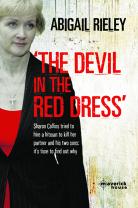One hundred and sixty years ago today a woman called Maria Louisa Kirwan died on an island. She died at the hands of the man she feared, who she had thought had tried to kill her in the past, the man she was planning to leave. She was 28.
Maria is nothing to me. We share no DNA. In the years since I started this blog I’ve written of many abused, frightened women like her, who like her, met their death by the one who they should be able to trust the most. Her story’s no different from any of theirs, no greater tragedy. But for me this one’s different. It’s personal.
Every morning when I sit down at my desk she’s one of the muses staring back at me, those three photographs from the Kirwan collection I wrote about a week or so ago. When I’m stuck for a word I look up and she meets my glance, the calm gaze of an infatuated 16 year old watching the man she loves sketch her. Twelve years later, give or take, he will kill her. I stare at that hopeful young face each day as I write her, mapping out her brief future. She grows into adulthood in that horrible marriage, makes do because there’s no way out, asks for help but is ultimately ignored. As I write her story I’m with her every step of the way but I’ll also be with him, when the time comes, choking the life out of her. That’s what’s different with this story. I’m not just telling what I see, this time I’m the puppet master. I’ll make her into a real girl but I’ll also kill her.
When you’re writing nonfiction there’s always a line you can’t cross, like a pane of glass through which you can see a life you write about but you can’t touch it. With fiction there’s no pane of glass. You can get right in there and have have a root around. You have to know your characters before you write them, but that always tends to make me feel rather protective.
So on September 6th I remember her, and by proxy all my other characters who lived but aren’t attached to such a conveniently fixed point in time. I might put flowers on her grave, this year I’m planning something a little further afield. It might sound morbid or a bit obsessive but it’s a way of keeping that concrete link with the past. I know that when she died Maria didn’t have much support. Her only brother was over seas, her father dead and her mother and many of her friends jumped to support her husband. She doesn’t even have a gravestone.
So this year, Maria gets the spotlight. A couple of days ago I wrote an Irishwoman’s Diary for the Irish Times about the time Maria met her husband’s mistress. Today there’s a post
on the National Library of Ireland blog about that picture of Maria that sits over my desk (along with the rest of the William Bourke Kirwan paintings in their collection). You might have to wait a while to read my book though as Maria’s story is part of a far longer tale and it’s still being written. But if you’re so inclined today, spare a thought for Maria Kirwan who was killed by her husband on Ireland’s Eye one hundred and sixty years ago today.


